29 April 2014
A second look at the mass transport deposit on Corridor H
Posted by Callan Bentley
Remember this past winter when Alan Pitts and I found what we interpreted to be a mass transport deposit (a submarine landslide/slump) along the new section of Corridor H leading up the Allegheny front?
Well, I was back out there yesterday, with Dan Doctor (USGS Reston) and Jay Kaufman (University of Maryland).
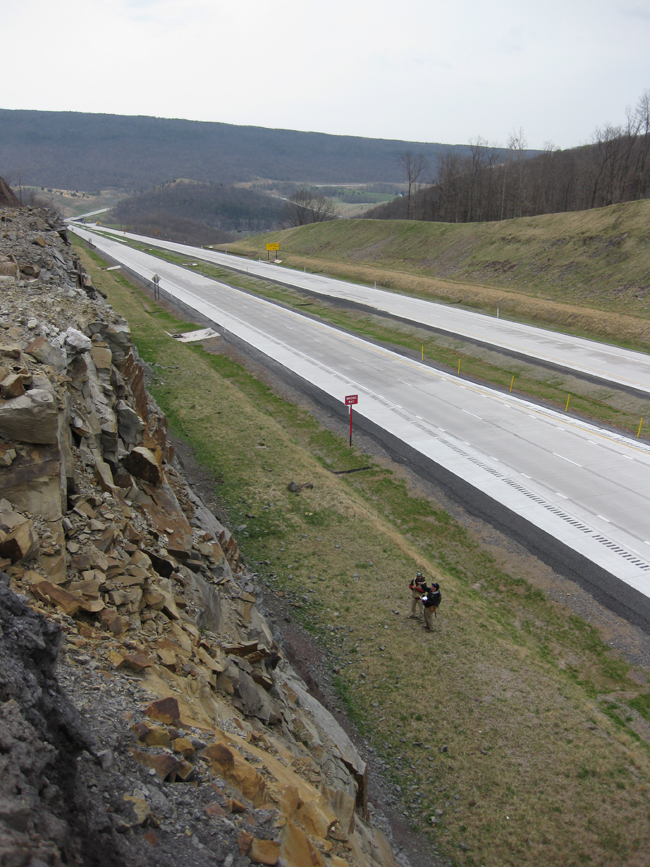
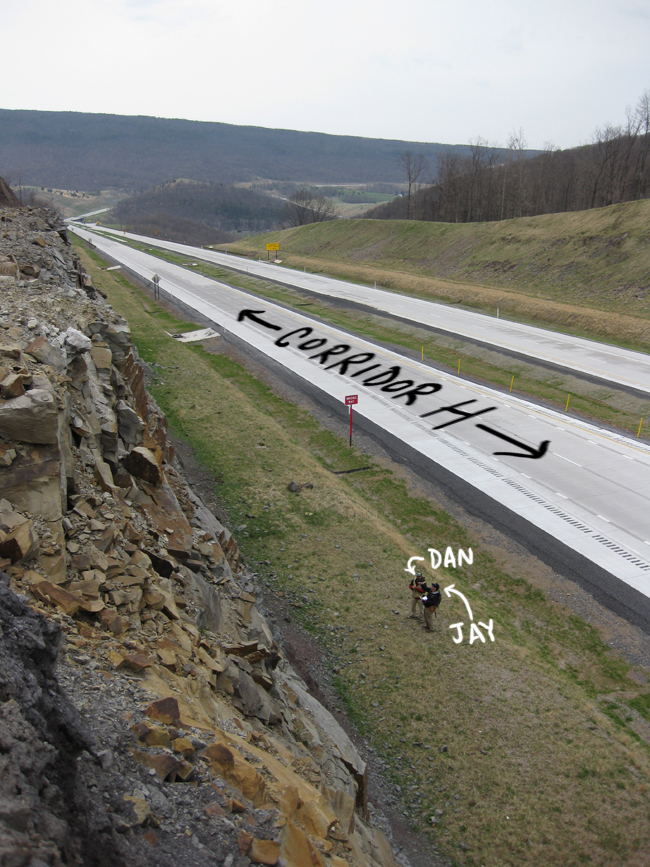
One new thing we found was lots of weathered-out “ploudins” (pillows/boudins), many of which had a “sleigh” shape (with a curled-over “nose”):
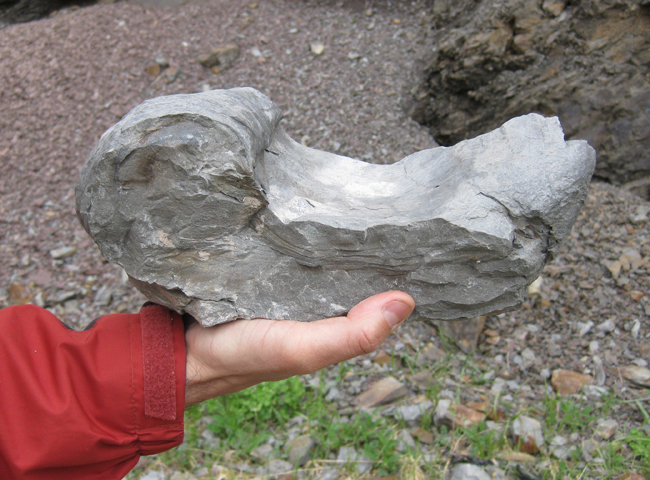
I guess Alan and I missed these due to snow cover on the ground when we visited? They were everywhere.
Several examples featured brittle faulting, of which this was the most striking example:
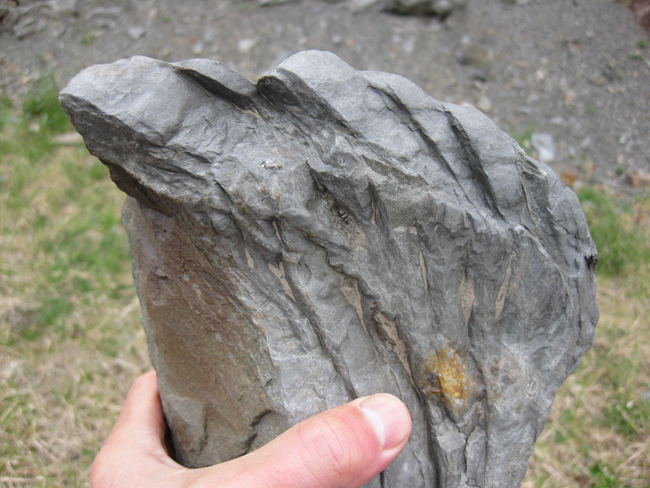
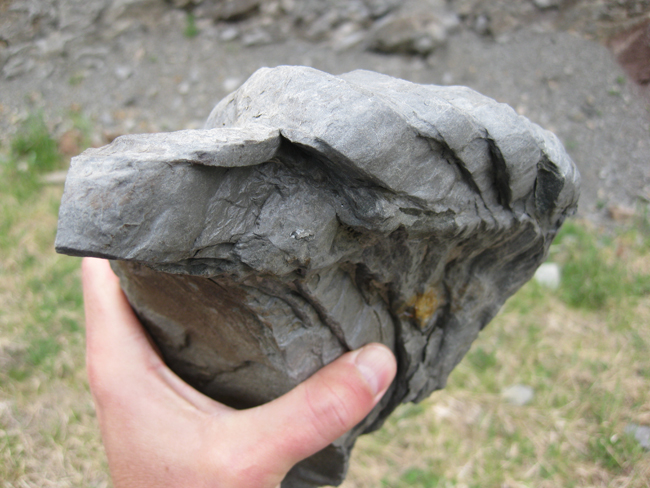
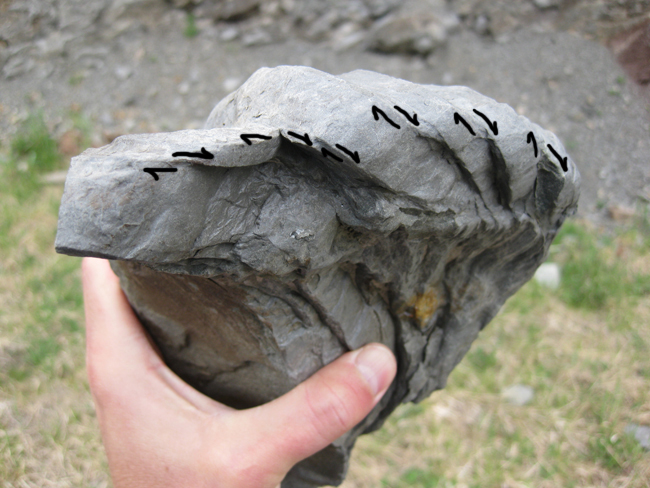
… It’s like a loaf of bread that’s been torqued, and individual slices have rotated relative to their neighbors. Crazy looking stuff – like “bookshelfing” in a mylonite’s feldspar porphyroclasts.
Others showed ductile internal structure:
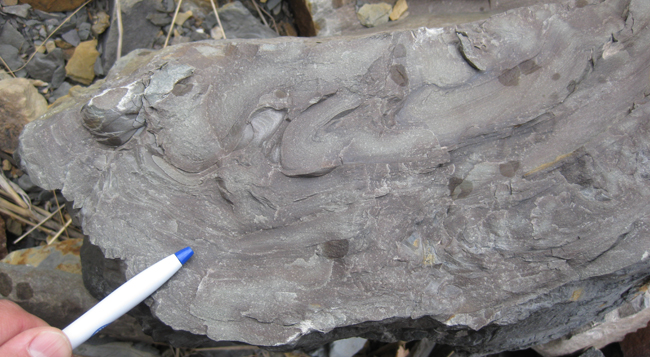
And still others showed primary structures in their cross-sections, such as the cross-bedding seen here and in subsequent images:
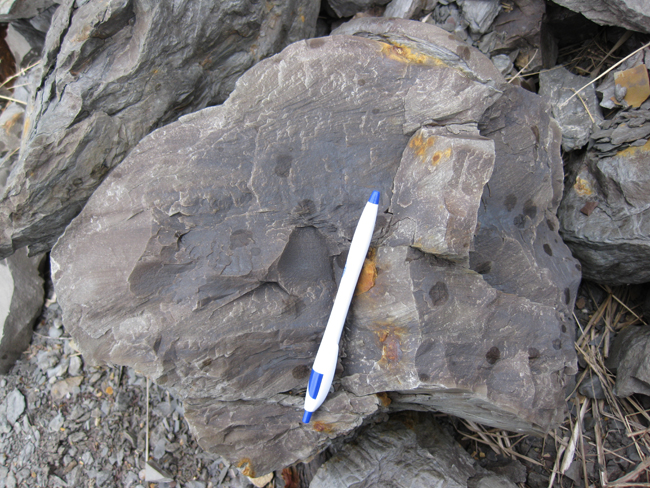
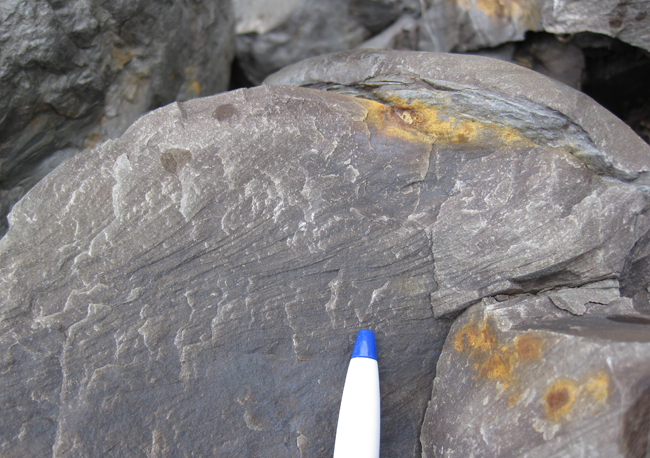
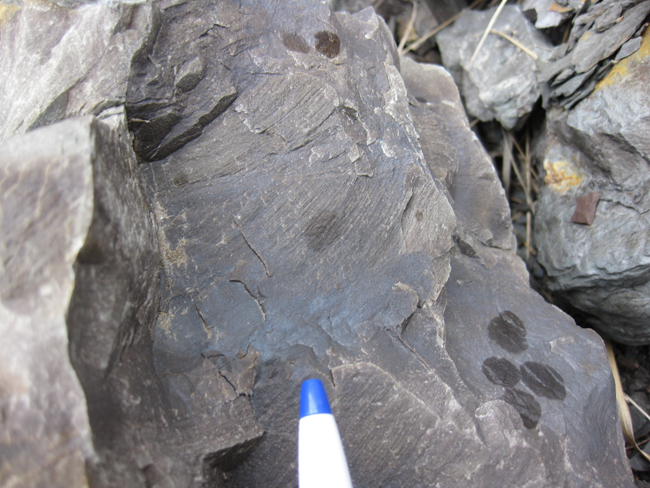
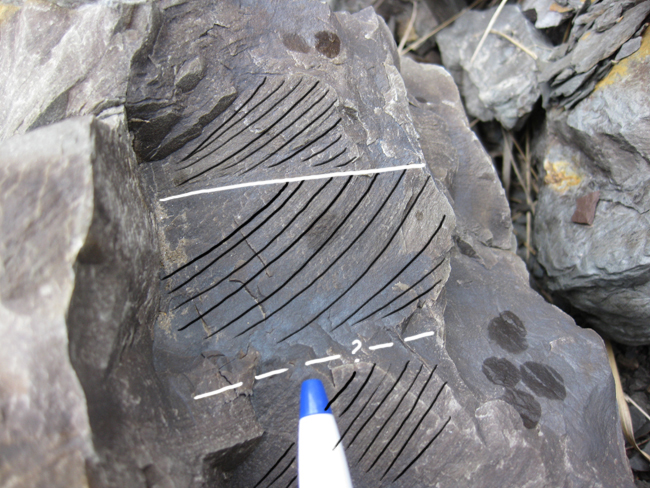
I saw at least one example with “climbing” ripples, which would suggest an excessive of sediment and rapid deposition, which would be consistent with a rapid sedimentary loading scenario causing a steepening of the sedimentary pile beyond the ability of the base of the pile to hold it all up, and — s p l o o c h — the whole thing collapses down and out. This doesn’t explain the small-scale faulting style of deformation as distinct from the folding, but perhaps that came later.
We did not find any slickensides on any of these “ploudins,” and so the consensus was that these were probably of primary sedimentary origin (not tectonically induced). As you can probably tell from the last few photos, it started raining while we were there, so while I would have loved to have spent more time collecting evidence and puzzling out the generation of this distinctive deposit, I was more interested in staying dry. So it’ll have to wait for another day.


 Callan Bentley is Associate Professor of Geology at Piedmont Virginia Community College in Charlottesville, Virginia. He is a Fellow of the Geological Society of America. For his work on this blog, the National Association of Geoscience Teachers recognized him with the James Shea Award. He has also won the Outstanding Faculty Award from the State Council on Higher Education in Virginia, and the Biggs Award for Excellence in Geoscience Teaching from the Geoscience Education Division of the Geological Society of America. In previous years, Callan served as a contributing editor at EARTH magazine, President of the Geological Society of Washington and President the Geo2YC division of NAGT.
Callan Bentley is Associate Professor of Geology at Piedmont Virginia Community College in Charlottesville, Virginia. He is a Fellow of the Geological Society of America. For his work on this blog, the National Association of Geoscience Teachers recognized him with the James Shea Award. He has also won the Outstanding Faculty Award from the State Council on Higher Education in Virginia, and the Biggs Award for Excellence in Geoscience Teaching from the Geoscience Education Division of the Geological Society of America. In previous years, Callan served as a contributing editor at EARTH magazine, President of the Geological Society of Washington and President the Geo2YC division of NAGT.
Dead-on fascinating…What causes the sleigh-like soft-sediment structures.
I need to go there!!
Brian,
Chuck Bailey (W&M) and Tom Biggs (UVA) want to see it, too. Let’s find a day in May / June that works for all 4 of us.
C
yes, sounds good … I’m pretty open in early June